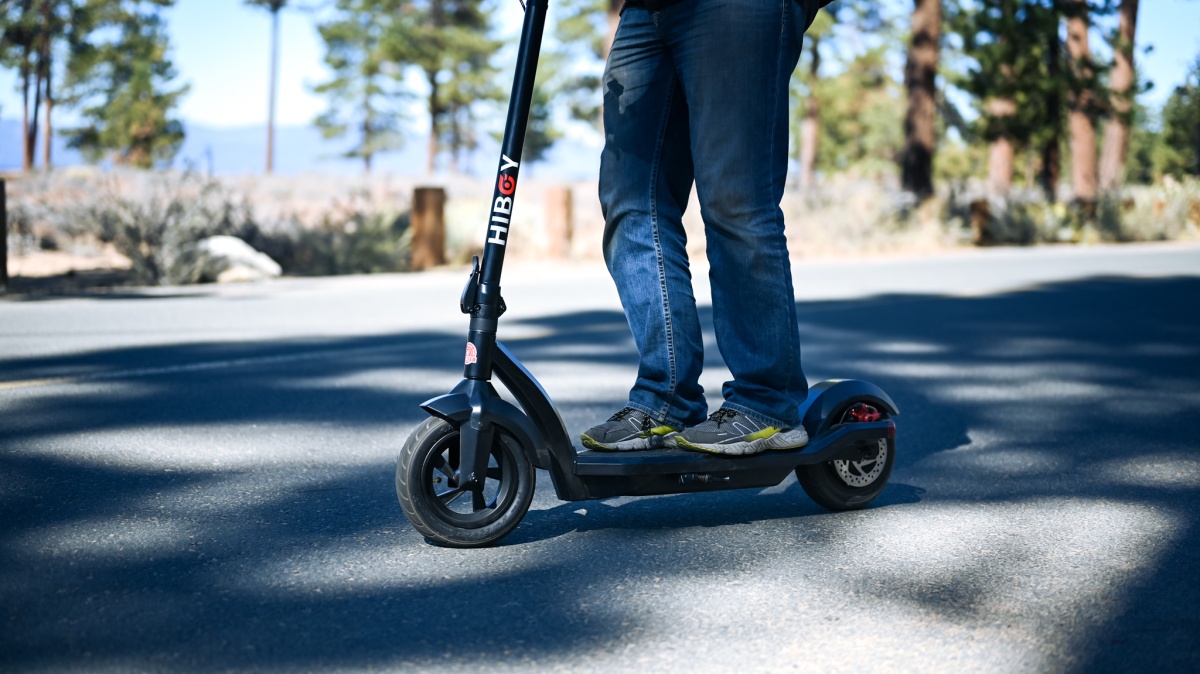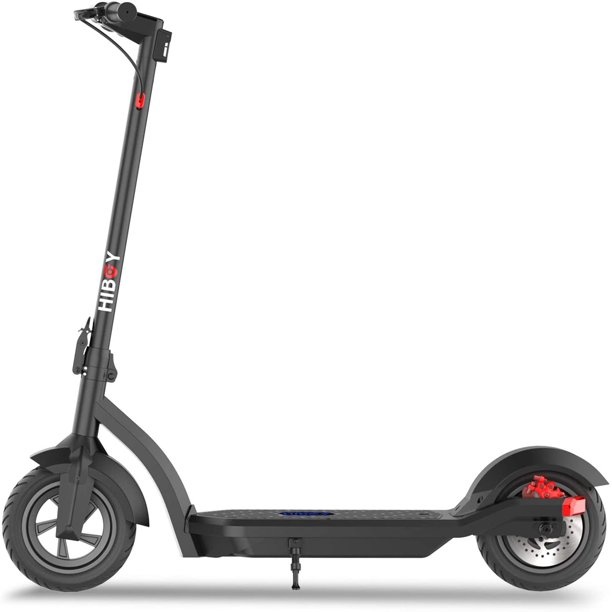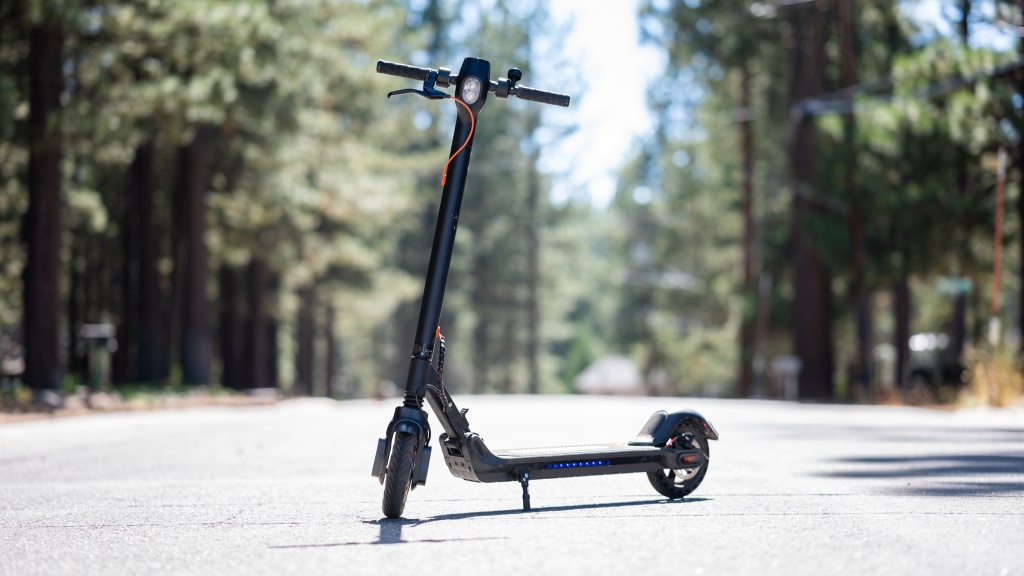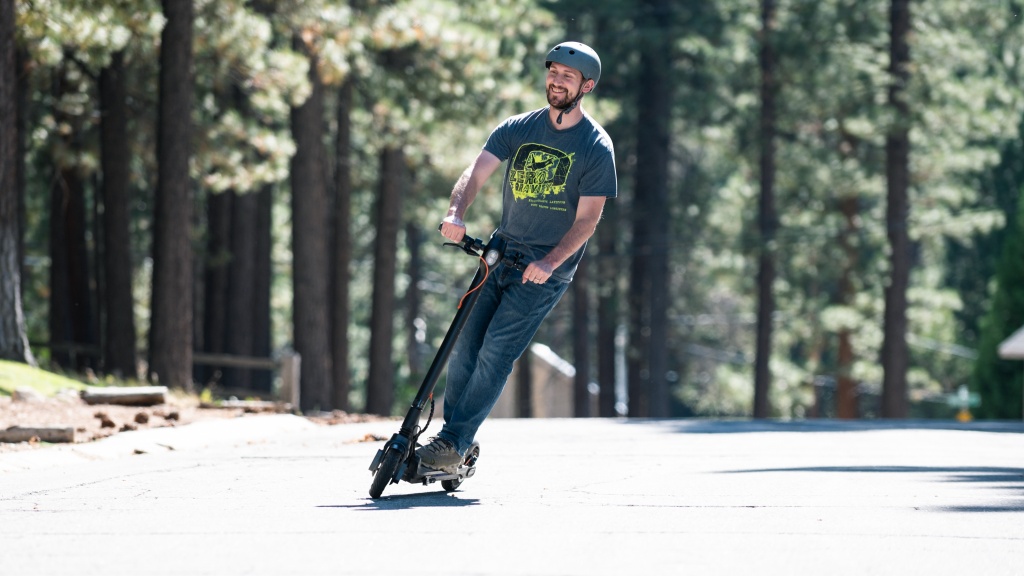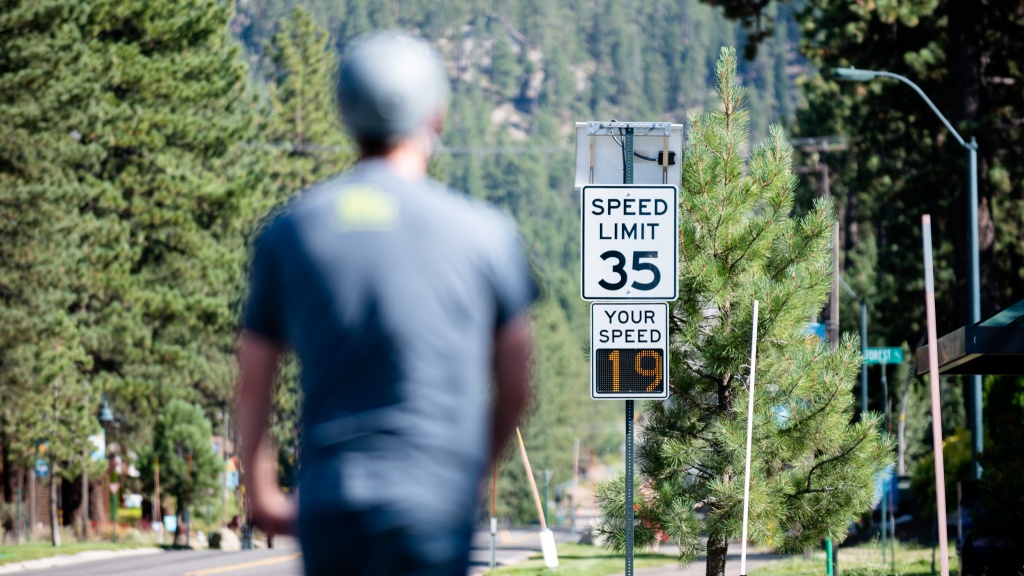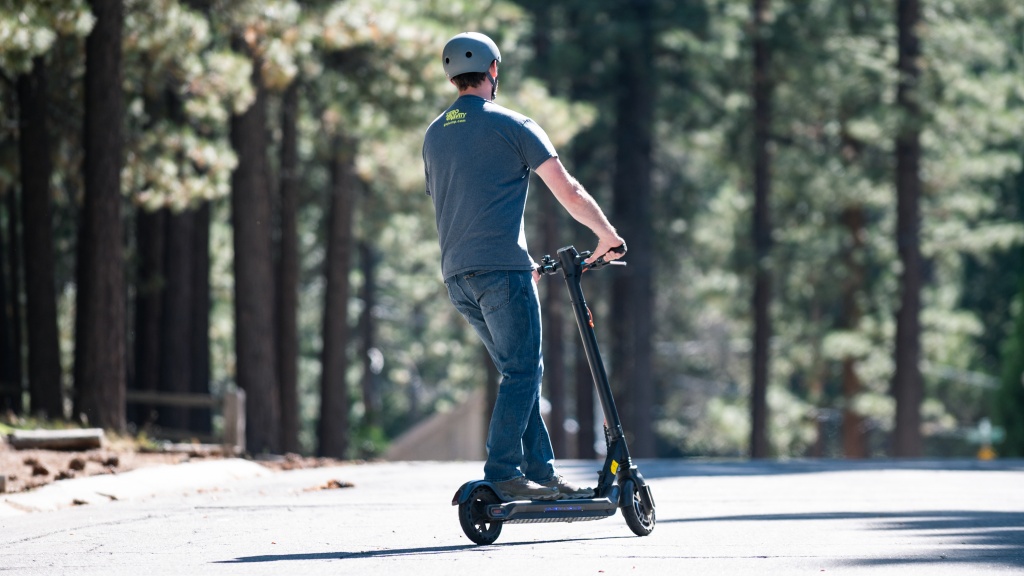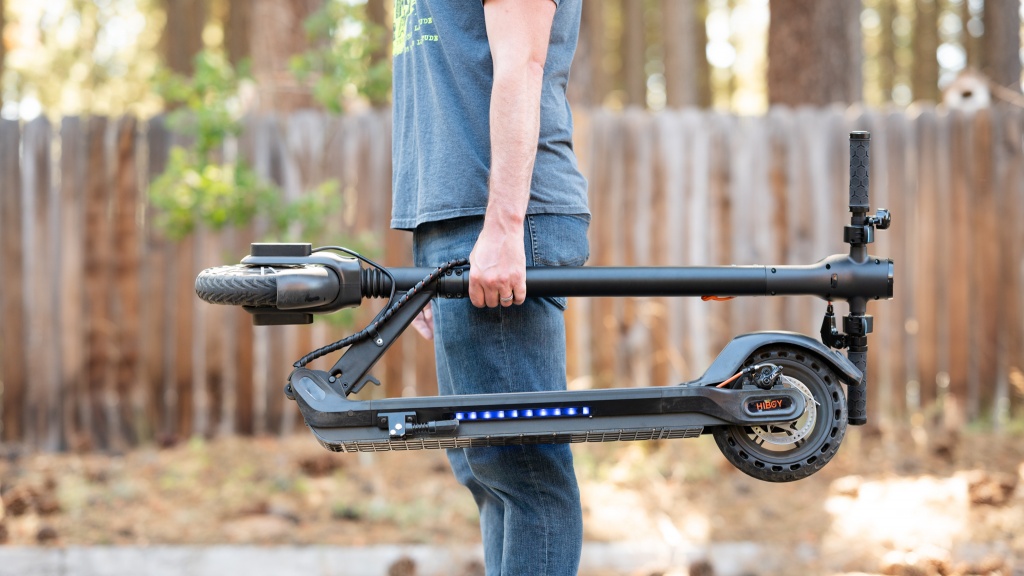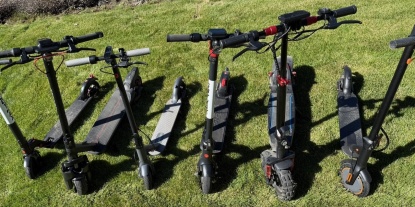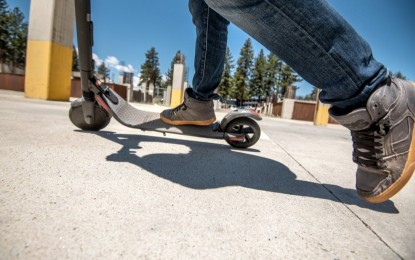
Our Verdict
Our Analysis and Test Results
The Hiboy Max has been updated to the Hiboy Max3, which now features a 10" pneumatic front tire designed for better off-roading capabilities, as well as a wider stand deck. The photos above depict the Hiboy Max we tested (left) next to the updated Max3 (right). Note that our affiliate links now point to the Max3, but as we haven't tested that model, the text in our review pertains to the previous Max scooter.
What sets this scooter apart from the rest of the class is its appealing cost to performance ratio. This is one of the fastest machines in the class. Moreover, it has the power, range, and portability features to make it a good choice for serious commuters. Adding to this already appealing package is a great braking system. It should not go without saying that the competitive price point does not come without sacrifices — particularly in the smoothness of the ride and the durability of the wheels. Yet, in our opinion, this is one heck of a deal.
Direct comparisons of products of a kind are our bread and butter. To ensure a complete evaluation of the products under review, we establish mutually exclusive, collectively exhaustive metrics to guide our investigation. The details of these analyses are discussed below.
Range
The Hiboy MAX has an effective range of 12.2 miles on a single charge. This is a flat ground maximum travel radius. The machine will continue for another quarter mile or so in fits and starts until the battery is completely dead — a common feature at the end of a scooter's battery charge.
It has a runtime of 59 minutes before the battery is depleted to the point of not being able to propel the rider. Again, this is on flat ground, so one can expect this number to decrease if traversing hilly terrain. Finally, we include battery recharge time in our range evaluation. The Hiboy beat the class average by powering up its fully depleted lithium-ion cell in 4 hours and 30 minutes. All in all, it performed relatively well.
Power
While the Hiboy MAX is a veritable speed demon at 19.3 mph, it struggled with one of the steeper hills (1/4 mile 10.5% grade) in our test.
In the MAX's defense, almost all of the models under review cannot climb this very steep hill and the MAX only faltered at the very end of the climb. That said, it does well on the 3.5% grade test hill which is more representative of the climbs that will be made in the “real world.” All in all, this puppy can legitimately claim to be one of the more powerful machines in the class.
Ride
The Hiboy's ride assessment is the chink in its otherwise impervious performance record. While it proved itself to be about average for the class, this outcome hindered its overall standing. Ride is essentially an evaluation of the feeling of smoothness when cruising rough streets, traversing bumps, and cracks. Scooters that excelled in this evaluation are those with large pneumatic tires which the MAX lacks.
It should be noted that the Hiboy's designers tried to address this shortcoming by using 8 1/2" wheels and adding front suspension. However, these measures are simply inadequate to mitigate the feedback that solid rubber tires deliver on uneven surfaces. Making matters worse, the tires developed flat spots in the course of our brake testing (more on that below) that made the ride that much more uneven. On the upside, solid tires never require maintenance such as an air leak or pinched rim.
Braking
Given the speed at which this machine can cruise, it's a good thing that it has a quality brake system. The Hiboy MAX utilizes an electric front and disk rear brake that are engaged separately with a paddle for the prior and a lever for the later. While this brake system performed well in our tests, some aspects of the system raised concerns from testers. Before we get into these issues, first let's get the stats out of the way. In our flat ground arrest test, the MAX was able to go from 12 mph to a complete stop in 19.3 feet — not bad considering it does not have a fender brake. Additionally, we were able to hold the scooter to a safe descent speed on a 15% grade, though the hand lever required a muscle-taxing grip to do so.
Moving on to some of the problems that the braking tests revealed. First was the issue of the default cruise control. Why the manufacturer preset the machine in this way is unclear but in order to get out of cruise control you need to hit the electronic brake first then squeeze the handle brake. This was overly and unnecessarily complicated. We recommend turning the cruise control off until you become familiar with the two-part braking system. Additionally, the brake light on the machine is only activated when using the electric brake.
As a final concern, we noticed that our brake test had flattened out portions of the rear wheel causing a consistent bumpy ride while cruising. Admittedly, we are hard on these machines in our tests. Yet, this can happen if you brake exceptionally hard repeatedly the way we did while testing.
Portability
The assessment of the MAX was so-so in this metric. First off, the Hiboy is moderately heavy at 35.2 pounds and the weight is on the front end making it slightly off-balanced when carrying. Unlike some other models, it's relatively long at 44 1/4" and it can not be rolled when folded. Further hindering the portability is the large diameter steering column that becomes the handle when collapsed. Those with hands on the smaller side will find this a little uncomfortable over prolonged periods.
The steering column locking system also poses some safety concerns in our minds. The manufacturer boasts a one-step fold design and, in our opinion, the time savings aren't worth the loss of peace of mind thinking about the machine folding up on you while riding. Most models have a redundant “safety latch” that visually displays that the steering column is secure. That said, we did not experience any failures in this Hiboy's folding system.
Value
We look at value as a ratio of the performance (as compared to similar products on the scooter market) and cost. By this standard, the Hiboy MAX is a good value. The machine costs considerably less than others in the class and yet has some of the best performance stats of the lot.
Conclusion
In this review of the Hiboy MAX electric scooter, we made an in-depth analysis of the range, power, ride, braking, and portability of the machine. Above is a detailed account of the tests that we ran this product through and how it lined up against the class of scooters overall and in specific categories like top speed and hill braking. As a last consideration, we assess the value of this product, which we consider to be quite good. All in all, this machine delivered a very respectable performance at a price that many can easily swallow.


